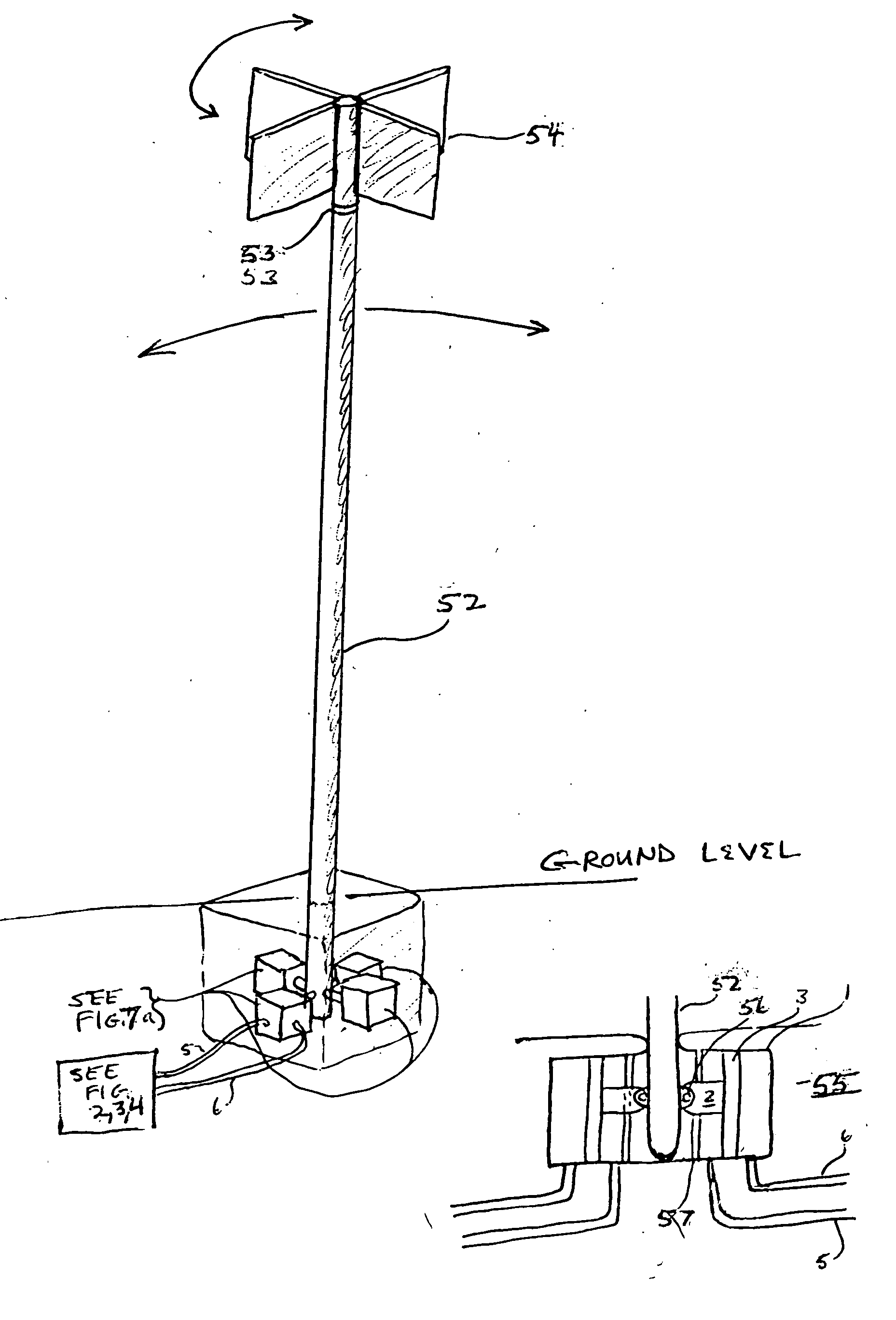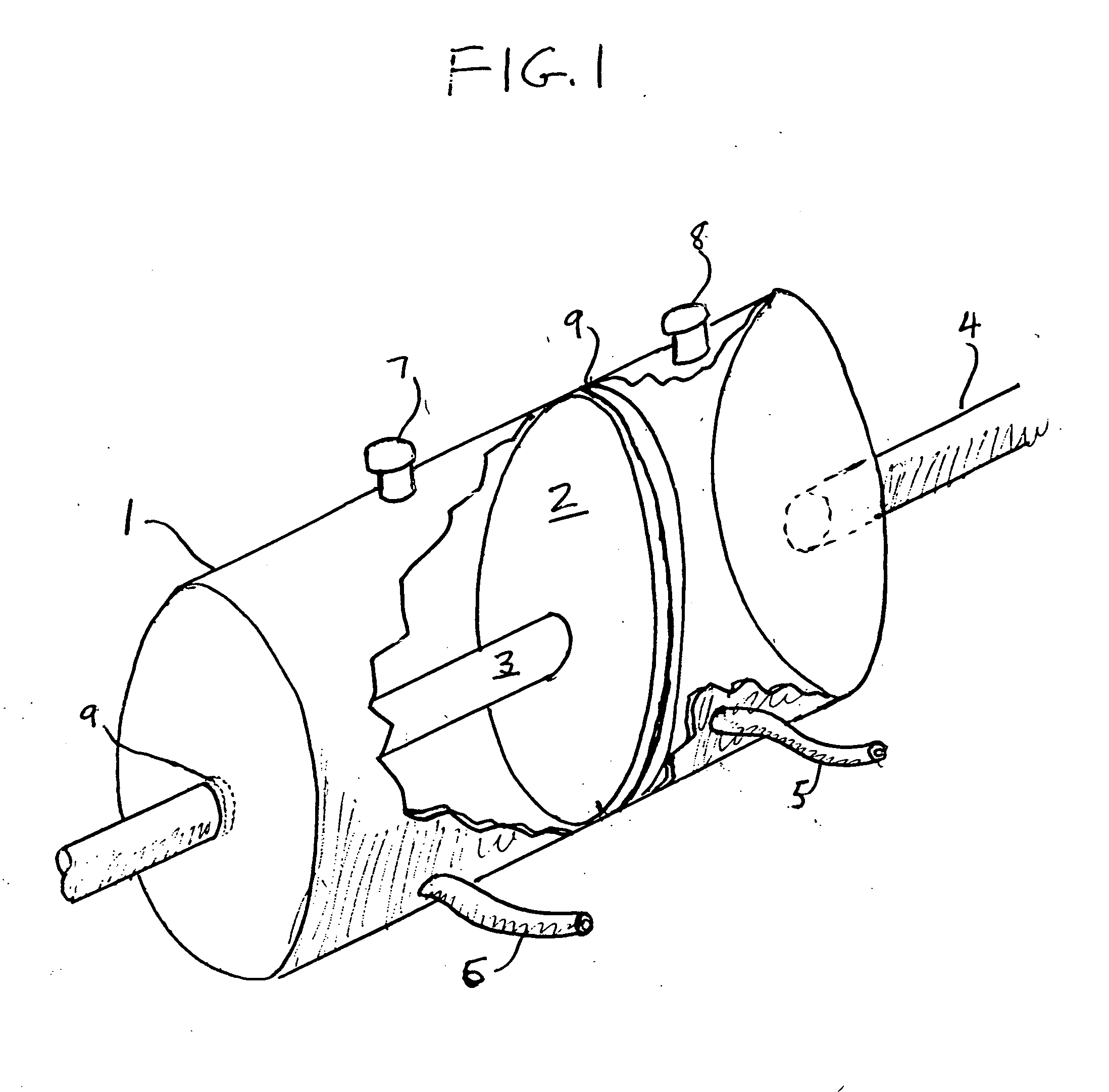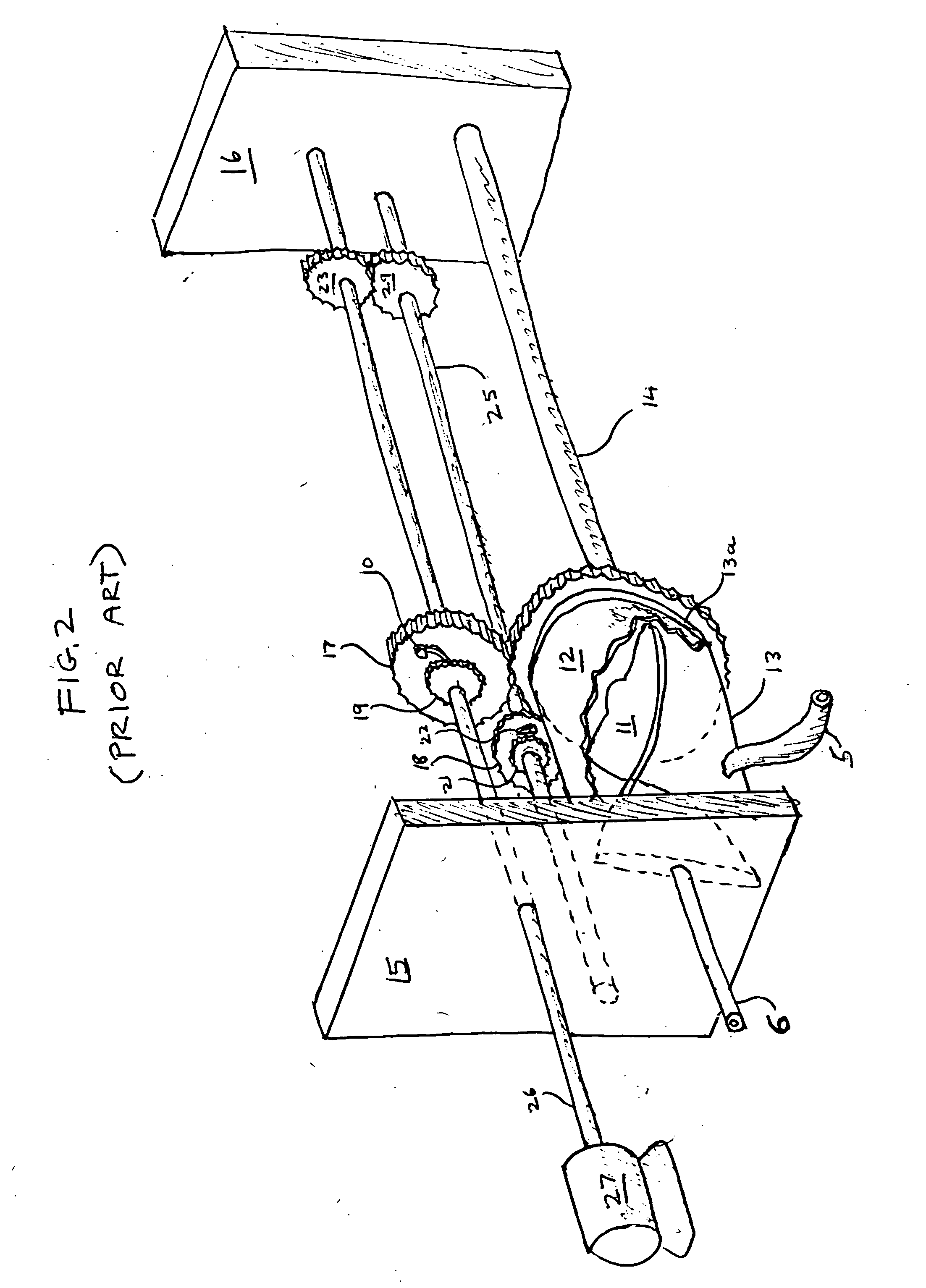Electrical energy from live loads
a technology of electric energy and live loads, applied in the direction of electric generator control, fluid couplings, couplings, etc., to achieve the effect of improving the efficiency of converting pressure energy
- Summary
- Abstract
- Description
- Claims
- Application Information
AI Technical Summary
Benefits of technology
Problems solved by technology
Method used
Image
Examples
first preferred embodiment
[0047]FIG. 6 shows an asphalt roadway 47. Buried under the roadway is a stainless steel chamber completely filled with water 49. On top of chamber 49 is stainless steel channel 48 with both legs rested on the top surface of chamber 49. Tube 50 led from chamber 49 is joined to tube 6 to supply pressure variations to Bourdon tube 11 or piston 30. Item 51 denotes the normal underfill of a roadway.
[0048] In operation, as vehicles or people traverse the roadway pressure variations on chamber 49 cause electric power to be produced with minimal displacement of the asphalt.
second preferred embodiment
[0049]FIG. 7 shows pole 52 in two sections with rotateable joint 53 between them. Affixed to the upper section is sail 54. Pole 52 is extended a short distance below ground level, shown in FIG. 7a. Concrete form 55 is formed to form a pivot for pole 52 and to contain certain conversion machinery as in FIG. 2, 3 or 4. Joint 56 fixes piston shaft 2 to pole 52 through wall 57. Piston 3 is within water-filled cylinder 1. Exit tubes 5,6 are shown and are led to Bourdon tube 11 and closed pipe 13 as previously noted, or piston 30.
[0050] In operation pressure on sail 54 causes pole 52 to sway and act as a lever, activating the conversion machinery and producing electricity. Instead of a sail 54, pole 52 may be connected to a tree which would act as a sail 54. See FIG. 18. Another way is to substitute a tall building 58 for sail 54, connecting pole 52 to the top of the building framework. See FIG. 8. Another similar alternative is shown in FIG. 9. Here, pole 52 is a mast on a sailboat. The...
third preferred embodiment
[0052] In FIG. 10 we see a container within a vehicle of some weight 61. This container 61 is enclosed by another container 62 fixedly attached to the framework of a vehicle. Between these containers are a number of structures as in FIG. 1. Shaft 4 is fixedly attached to container 62, and shaft 3 is mace to terminate as a ball bearing 63 which is made to ride on the outer surface of container 61.
[0053] In operation, as the mass of container 61 and its contents acquire a different momentum than the vehicle frame due to the impact of live loads the machinery of the invention is activated to convert pressure energy into electrical energy. The contents of container 61 may be fuel, a battery, or cargo.
PUM
 Login to View More
Login to View More Abstract
Description
Claims
Application Information
 Login to View More
Login to View More - R&D
- Intellectual Property
- Life Sciences
- Materials
- Tech Scout
- Unparalleled Data Quality
- Higher Quality Content
- 60% Fewer Hallucinations
Browse by: Latest US Patents, China's latest patents, Technical Efficacy Thesaurus, Application Domain, Technology Topic, Popular Technical Reports.
© 2025 PatSnap. All rights reserved.Legal|Privacy policy|Modern Slavery Act Transparency Statement|Sitemap|About US| Contact US: help@patsnap.com



